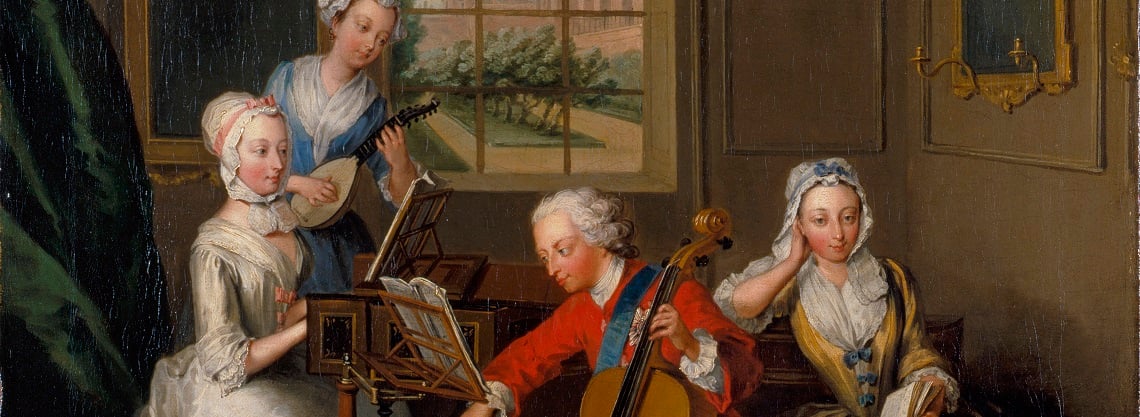
Music in the Royal Collection
Many members of the royal family were talented musicians
Transverse flute
c.1760RCIN 72173
It is highly likely that this flute was made by the German porcelain factory, Meissen, the leading porcelain manufacturer in Europe during the first half of the eighteenth century. While its origins are not certain, its decorations appear to correspond with Meissen productions from around 1760.
This flute can be broken down into five pieces. From c.1720, flutes began to be made in sections, with interchangeable pieces known as corps de rechange. This was so that the flute could be played in different keys. However, eighteenth century flutes were mostly made out of ebony, fruitwood or boxwood and with these materials the tuning could be refined by adjusting the bore (internal channel) of the different sections. This flute is made of fired and glazed porcelain and so can’t be adjusted in this way. The material also makes this flute difficult to hold upright for long periods of time as it is very heavy. It is possible that it was made of porcelain for its appearance rather than its tone.
Learn more about the flute in this short film:







